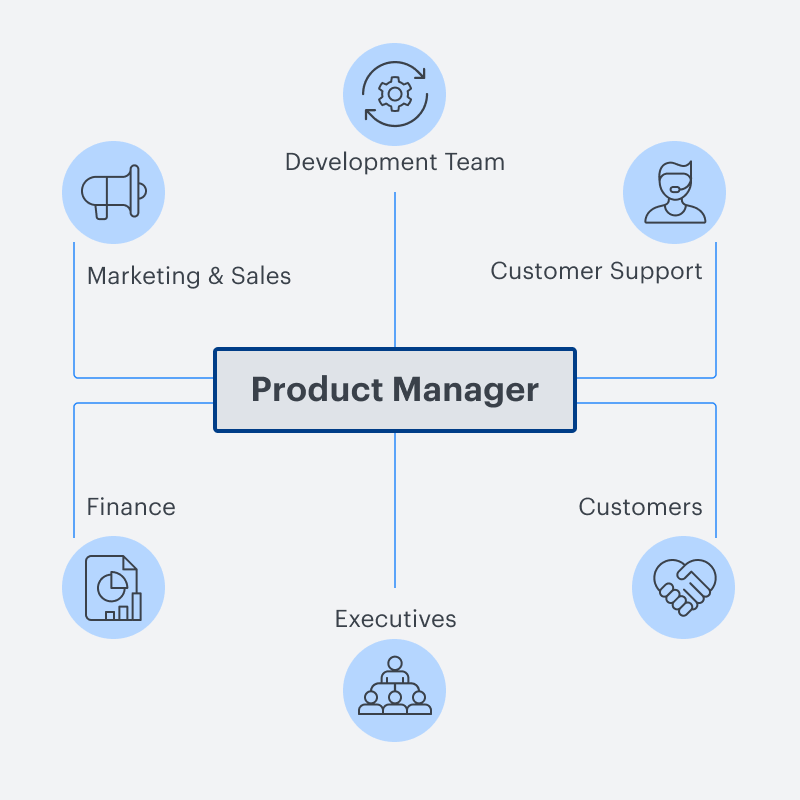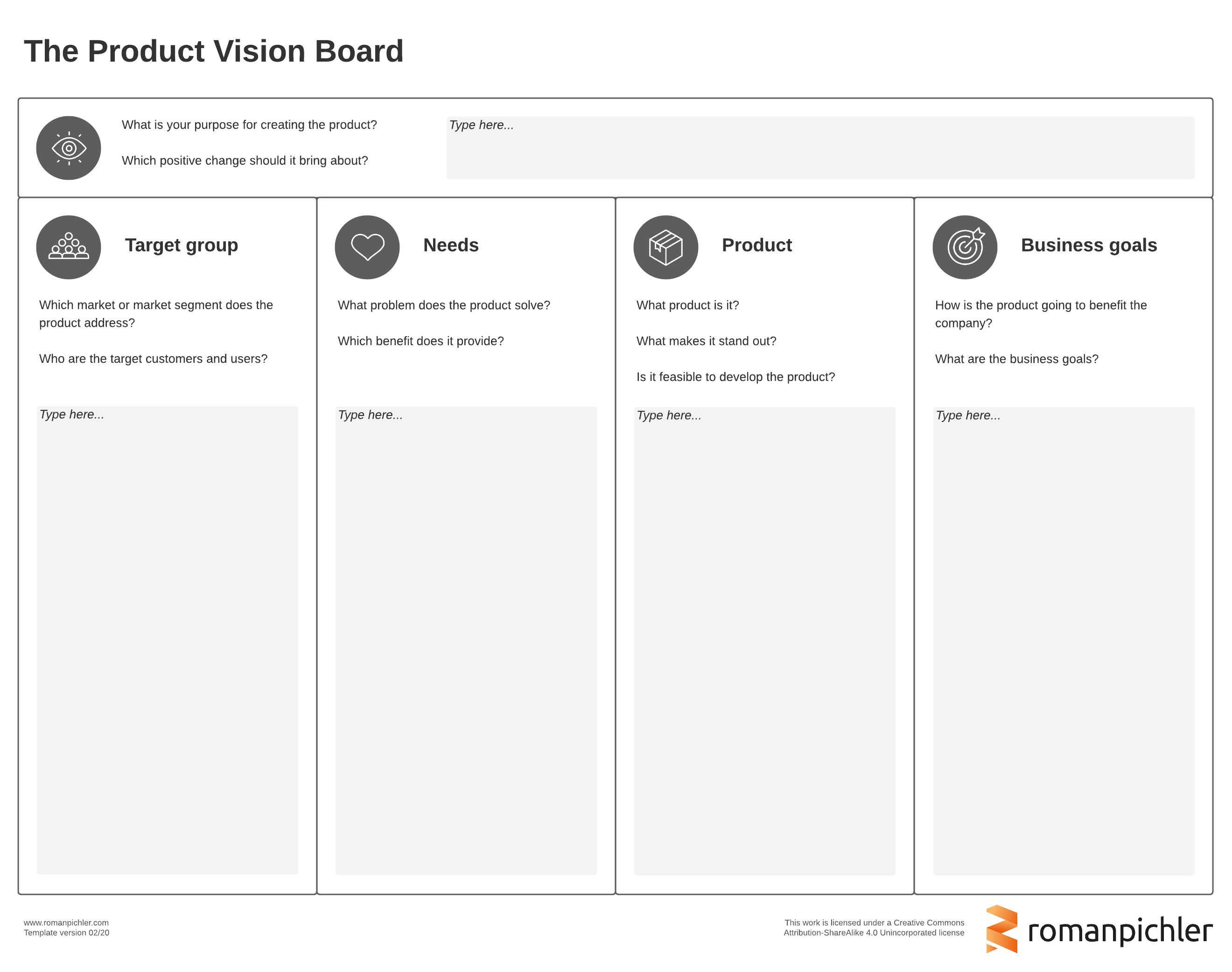
How to fix 6 common product strategy mistakes: A Q&A with Roman Pichler
Reading time: about 8 min
Topics:
Product management has evolved significantly since the widespread move away from Waterfall methodologies: Agile teams are working more collaboratively and iteratively, allowing for increased speed of delivery and adaptability. Yet many teams still struggle with a key part of product management: Product strategy.
Why does product strategy remain such a persistent challenge today? To find out, we talked with product management expert, author, and speaker Roman Pichler.
Drawn from over 15 years of experience in product management advising and teaching product leaders and owners how to improve their product strategy, Pichler shared insights on how to define and communicate an effective product strategy, avoid common mistakes, and secure strong stakeholder buy-in.
Let’s start with the basics. What is a product strategy and why do companies need one?
A product strategy is a high-level plan that helps product managers realize and share their vision, and states how they intend to achieve product success. A good product strategy explains:
- Who the product is for, and why people would want to use and buy it
- What the product is, and what makes it stand out
- What the product’s business goals are
In other words, an effective product strategy captures the market, the needs, the key features or differentiators, and the business goals.
Without a product strategy, it is difficult for companies to understand what value a product will create and if it should be created in the first place—and once a product is launched, if it is delivering the desired value and how it should be progressed. To put it differently, a product strategy helps companies make smart investment decisions and to effectively manage their product portfolios.
Agile has given teams many techniques to improve product delivery, but it doesn’t provide guidance on product strategy. Can you elaborate on this point?
An Agile framework like Scrum silently assumes that the Scrum team—product owner, developers, and Scrum Master—know who their users and customers are, why these individuals will want to interact with and pay for the product, and why it’s worthwhile for the company to spend money on developing the product. Without this knowledge, it would be impossible to effectively stock the product backlog and write the right user stories.
Scrum, however, does not offer any guidance on how to determine the right target group and needs. It also does not offer any help on selecting the right business goals and ensuring that they are realistic. In other words, Scrum wants to help teams develop complex products, but it’s not a product management framework.
If Agile teams aren’t aware that there’s an area of work not covered by Scrum and neglect product discovery and strategy work, they tend to focus almost exclusively on execution and delivery. In the worst case, a team may end up doing a great job at building a product that people don’t want and need or that doesn’t generate enough value for the business.
What are the biggest mistakes you’ve seen companies make with regards to product strategy?
There are six common product strategy mistakes I see companies make:
1. No product strategy. Without a product strategy, it’s unclear who the users and customers of a product are, what value it should create for them, what differentiates the product from competing offerings, and what benefits it should deliver to the business.
2. The product strategy contains wrong information. This is often due to mixing up business strategy and product strategy. The former should state the approach chosen to make or keep the company successful. The latter should describe how you intend to make the product successful.
3. The product strategy has not been validated. An unvalidated product strategy contains assumptions that have not been tested and risks that have not been addressed. In the worst case, it is built on wishful thinking rather than data. As a consequence, the target group may be wrong, the value proposition may not be strong enough, or the business goal may be unrealistic.
4. The product strategy is disconnected from tactical product decisions. In these situations, the strategy does not direct the product backlog, and the data gathered from developing product increments and releasing new product versions is not used to evolve the strategy.
5. The product strategy is not supported by the key stakeholders and development teams. A lack of stakeholder support renders the best strategy useless. A great way to secure strong buy-in is to invite the key stakeholders and development team members to create and update the plan.
6. Product strategy is not kept up-to-date. In these instances, a product strategy is seen as a fixed plan that needs to be executed. But as the product grows and evolves and markets change, the strategy must be adapted. To ensure that the strategy stays useful, review it once every three months, as a rule of thumb.
You mention stakeholder support as a critical part of product strategy. How can a product manager communicate their strategy to relevant stakeholders?
The best way to communicate a product strategy is to involve some of the individuals—the key stakeholders—in creating, validating, and updating the plan, preferably in the form of a collaborative workshop.
The key stakeholders are the individuals whose active support you need to offer the product. For a commercial product, this might include a marketer, sales rep, support rep, and finance expert. I find that this approach leverages the expertise of the individuals, creates clarity and alignment, and increases the chances of securing strong support.

When collaborating on the product strategy, don’t make the mistake of trying to please people or allowing individuals to dominate the decision-making process. Instead, search for a decision that maximizes the value your product creates and at the same time, is inclusive and attracts as much support as possible.
Be careful to not agree to a weak compromise. Deciding together does not mean that everybody gets their way or is necessarily super happy with every decision. It means leveraging people’s expertise, ideas, and concerns, creating a shared understanding, and finding an appropriate solution that generates as much buy-in as possible.
What tips or tools would you offer to help document and share product strategy?
The best product strategy is worthless if you can’t clearly express and communicate it. To address this challenge, I developed the product vision board. The board is a simple yet effective tool to express the product strategy in a concise and accessible way. As the picture below shows, it consists of five sections: Vision, target group, needs, product, and business goals. The top one captures the vision; the bottom four describe the product strategy.

My intention for creating the product vision board was to offer a practical tool for Agile teams to collaboratively create, validate, and update a product strategy. Lucidspark offers a great implementation of the product vision board that makes it easy for teams to collaborate online, no matter where they’re working. You can also learn more about the product vision board by reading my book Strategize.
What advice do you have for product owners struggling to practice effective product strategy?
In my experience, it’s not uncommon for product owners to find it challenging to make effective strategic decisions. To improve the situation, start by determining the causes. Here are three common ones:
1. Lack of empowerment: In some cases, product owners are not empowered to make strategic product decisions. Consequently, they do not own the product strategy, and others decide on it. If this is the case for you, explore how you can increase your authority.
As a Scrum product owner, you should have full-stack ownership. You should own not only tactical product decisions and manage the product backlog, but you should also own the strategic ones and manage the product strategy and roadmap. Otherwise, you will struggle to fulfill your responsibility of maximizing the value the product creates.
2. Lack of knowledge: Some product owners lack the ability to create, validate, and update a product strategy. In this case, acquire the relevant knowledge by attending an instructor-led training course and reading articles and books on product strategy. Don’t forget to put your knowledge to the test by applying it to your product—for instance, by creating a product vision board.
3. Lack of time: Product owners are often so busy with updating the product backlog, writing user stories, and guiding the development team, that they don’t have the time and energy to work on the product strategy. If this is true for you, stop carrying out tasks that are not part of your role, like performing Scrum Master duties.
Additionally, delegate some of your work. For instance, the development team members might be able to do some product backlog refinement work on their own. Finally, ring fence some time in your calendar to work on the strategy and carry out discovery work—at least half a day per week, as a rule of thumb.
I help address these challenges in my product strategy and roadmap training course, which teaches you how to build, validate, and update a winning product strategy.
If there’s one thing about product strategy you’d like our readers to take away, what would that be?
The key takeaway is that product strategy is not something lofty or nice-to-have. It matters, as it guides the day-to-day decisions of product owners and teams. It is important to ensure that an effective product strategy is available and that it’s regularly reviewed and updated. In the words of Sun Tzu: “Strategy without tactics is the slowest route to victory. Tactics without strategy is the noise before defeat.”

Toolkit
Take your product strategy to the next level with Roman Pichler’s toolkit for your product management needs.
Check it outAbout Lucid
Lucid Software is the leader in visual collaboration and work acceleration, helping teams see and build the future by turning ideas into reality. Its products include the Lucid Visual Collaboration Suite (Lucidchart and Lucidspark) and airfocus. The Lucid Visual Collaboration Suite, combined with powerful accelerators for business agility, cloud, and process transformation, empowers organizations to streamline work, foster alignment, and drive business transformation at scale. airfocus, an AI-powered product management and roadmapping platform, extends these capabilities by helping teams prioritize work, define product strategy, and align execution with business goals. The most used work acceleration platform by the Fortune 500, Lucid's solutions are trusted by more than 100 million users across enterprises worldwide, including Google, GE, and NBC Universal. Lucid partners with leaders such as Google, Atlassian, and Microsoft, and has received numerous awards for its products, growth, and workplace culture.
Related articles
How I use Lucid for product roadmapping
See how a product manager at Lucid uses Lucid to increase collaboration, clarity, and alignment during product roadmapping.
